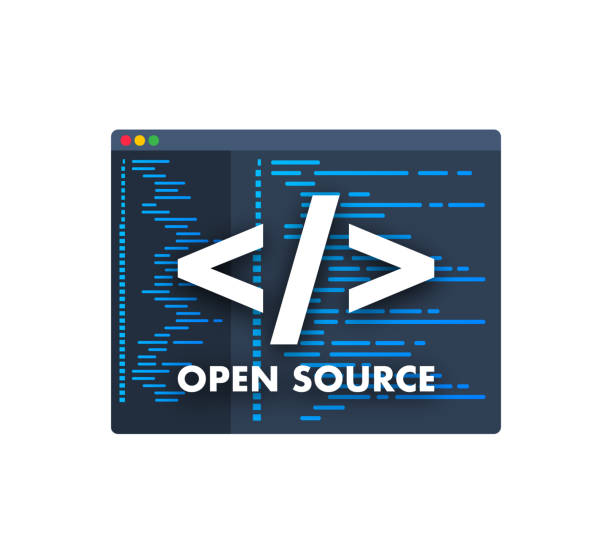
The machine learning (ML) landscape continues to evolve rapidly. In 2025, developers, researchers, and data scientists have access to a wide range of open-source tools that empower them to build, train, and deploy models with remarkable flexibility and control. These tools support experimentation, scale with ease, and promote collaboration across teams and communities.
Open-source solutions drive innovation through transparency and adaptability. They allow users to inspect, customise, and contribute to the underlying code, creating a vibrant ecosystem where ideas transform into impactful products and discoveries. Below is a curated selection of the most effective and widely adopted open-source tools for machine learning in 2025, each offering unique strengths and use cases.
1. TensorFlow
TensorFlow continues to serve as a robust and comprehensive platform for developing ML models. Created by Google, this tool supports a variety of use cases, including deep learning, reinforcement learning, and large-scale deployment. Its well-structured APIs, extensive community resources, and compatibility with tools such as TensorBoard and Keras enable users to design and monitor complex workflows with precision.
In 2025, TensorFlow’s focus on performance optimisation and integration with edge devices makes it a preferred choice for production-ready solutions, especially in mobile, IoT, and embedded systems.
2. PyTorch
PyTorch remains a favourite among researchers and developers who value dynamic computation and flexibility. Backed by Meta AI, PyTorch offers an intuitive interface, seamless debugging, and strong community support. With its integration into the OpenAI and Hugging Face ecosystems, PyTorch powers a wide range of cutting-edge models in natural language processing, computer vision, and generative AI.
The release of PyTorch 3.0 brings improvements in compiler efficiency and memory management, further solidifying its role in academic research and real-world applications alike.
3. Hugging Face Transformers
Hugging Face continues to shape the NLP domain with its Transformers library. This tool provides pre-trained models for tasks such as text classification, summarisation, translation, and question answering. Users can access a wide variety of architectures — including BERT, GPT, T5, and RoBERTa — and fine-tune them for specific tasks using a standardised interface.
With a growing ecosystem that includes datasets, tokenisers, and evaluation metrics, Hugging Face empowers developers to build language-aware applications with efficiency and sophistication.
4. Scikit-learn
Scikit-learn offers a solid foundation for classical machine learning. Built on top of NumPy, SciPy, and matplotlib, it provides efficient tools for regression, classification, clustering, dimensionality reduction, and model selection. Its consistent API and well-documented modules make it a go-to library for beginners and experienced practitioners alike.
In 2025, Scikit-learn’s continued development and alignment with new data formats ensure its relevance in structured data workflows and lightweight model pipelines.
5. JAX
JAX, developed by Google Research, excels in numerical computing and high-performance ML applications. It supports function transformations such as automatic differentiation, vectorisation, and just-in-time compilation using XLA. This makes it ideal for researchers building custom model architectures or exploring experimental optimisations.
Its compatibility with tools like Flax and Haiku allows developers to create flexible neural network layers, offering a compelling alternative to more traditional deep learning frameworks.
6. MLflow
MLflow addresses the growing need for machine learning lifecycle management. This open-source platform helps track experiments, package code, share models, and deploy them across environments. It supports multiple ML frameworks, including TensorFlow, PyTorch, and Scikit-learn.
In 2025, MLflow’s expanded integrations and robust UI offer greater visibility into model performance and reproducibility, making it a key asset for enterprise teams managing collaborative ML projects.
7. Apache Spark MLlib
Apache Spark’s MLlib supports large-scale distributed machine learning. Built on Spark, it enables parallel processing of large datasets using standard ML algorithms. It integrates seamlessly with big data infrastructures and supports scalable training pipelines in environments where data volume and velocity are key considerations.
In real-time analytics and streaming contexts, MLlib proves useful for batch and online learning scenarios, especially when combined with data lakes and cloud-native data platforms.
8. ONNX (Open Neural Network Exchange)
ONNX standardises model representation across different frameworks. Developed by Microsoft and Meta, ONNX provides an open format for exporting, importing, and optimising models for deployment. It supports conversion between PyTorch, TensorFlow, and other frameworks, enabling seamless deployment to various runtime environments such as ONNX Runtime and OpenVINO.
In multi-framework workflows, ONNX allows teams to collaborate without constraint, while also enhancing model portability and performance optimisation.
9. DVC (Data Version Control)
DVC introduces version control for machine learning projects. It manages datasets, model files, and experiment metadata using Git-like workflows. With DVC, teams track changes, reproduce results, and share models securely and efficiently.
In 2025, DVC integrates more tightly with cloud storage solutions and CI/CD pipelines, helping teams automate model updates and maintain reliable delivery workflows.
10. Ray
Ray is a powerful framework for building distributed applications. It supports scalable ML training, hyperparameter tuning, and reinforcement learning. With libraries such as Ray Tune and Ray Serve, users can effortlessly manage distributed experiments and model serving.
Ray simplifies parallel computing and resource management, which benefits projects involving massive datasets or complex simulations.
Final Thoughts
The open-source ecosystem in 2025 presents a rich collection of machine learning tools that cater to diverse needs. From building and training models to tracking experiments and deploying across platforms, these tools provide the infrastructure for intelligent and scalable solutions.
Their open nature encourages experimentation, fosters transparency, and nurtures community-driven growth. As organisations and individuals continue to explore machine learning’s capabilities, these open-source tools offer the flexibility and power needed to build the next generation of data-driven applications.

Leave a Reply